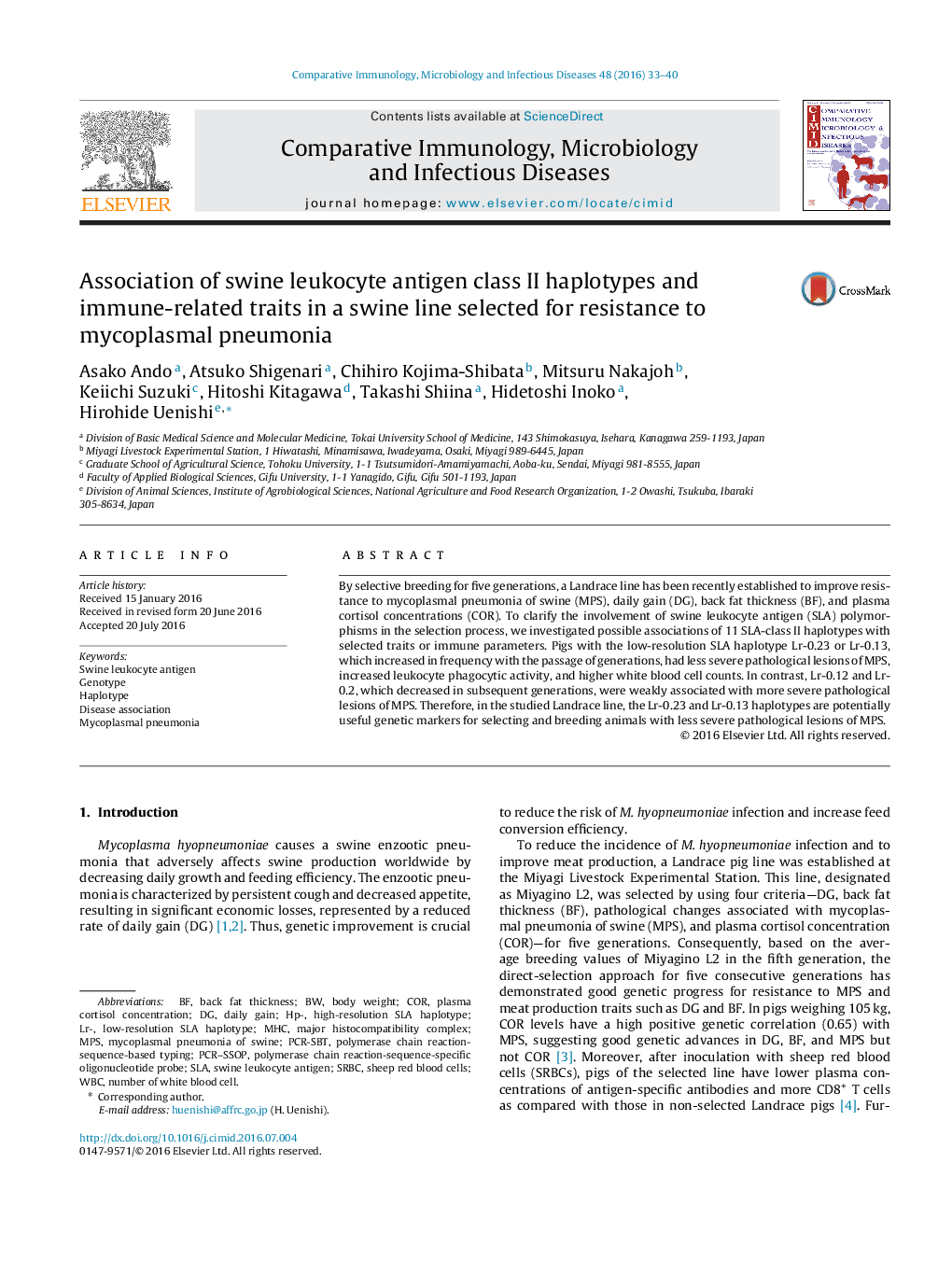| Article ID | Journal | Published Year | Pages | File Type |
|---|---|---|---|---|
| 2428114 | Comparative Immunology, Microbiology and Infectious Diseases | 2016 | 8 Pages |
•We examined association of swine MHC (SLA) class II haplotypes with traits in pigs.•The line studied had improved resistance to mycoplasmal pneumonia of swine (MPS).•Two haplotypes showed increased frequency and decreased MPS lesions.•Two haplotypes, associated with increased MPS lesions, decreased in frequency.•SLA class II haplotypes are useful markers for breeding to decrease MPS lesions.
By selective breeding for five generations, a Landrace line has been recently established to improve resistance to mycoplasmal pneumonia of swine (MPS), daily gain (DG), back fat thickness (BF), and plasma cortisol concentrations (COR). To clarify the involvement of swine leukocyte antigen (SLA) polymorphisms in the selection process, we investigated possible associations of 11 SLA-class II haplotypes with selected traits or immune parameters. Pigs with the low-resolution SLA haplotype Lr-0.23 or Lr-0.13, which increased in frequency with the passage of generations, had less severe pathological lesions of MPS, increased leukocyte phagocytic activity, and higher white blood cell counts. In contrast, Lr-0.12 and Lr-0.2, which decreased in subsequent generations, were weakly associated with more severe pathological lesions of MPS. Therefore, in the studied Landrace line, the Lr-0.23 and Lr-0.13 haplotypes are potentially useful genetic markers for selecting and breeding animals with less severe pathological lesions of MPS.
